When you first venture into the world of home cocktail making, it’s only natural to feel overwhelmed. There’s an endless supply of books, articles and recipe ideas. Which to pick? Where to start?
Here’s an easy hack to remember as it'll fast forward you into being more proficient, more confident and more creative – most cocktails follow patterns and you can group them into “families”.
Once you understand how best to make a certain family of cocktail – you’ll be able to read through the countless riffs, twists and variations with absolute confidence that you know some base principles for how to balance them to suit your preferences.
THE SOUR:


The Sour is considered a must-know staple in the world of cocktail families. It’s so simple and therein lies its beauty and why there are so many versions. The serve follows a very straightforward formula:
Spirit + Citrus + Sugar (+ opt Egg White).
Traditionally The Sour was created with the use of Bourbon in the Whiskey Sour, but swap out Bourbon with Amaretto for a Disoranno Sour, Pisco for a Pisco Sour, Rum for a Santa Cruz Sour, Gin for… etc. You see, so many riffs that aren’t really riffs at all, they are the same formula, with different ingredient combinations.
The addition of egg white in a Sour is completely optional and it's inclusion or not is often what confuses new home cocktail makers as to what a Sour is. Many bartenders opt to include it as it can give the cocktail that added flavour balance and improve the drink’s final texture and aesthetic. For us, a Sour always has egg white (or vegan alternative).
That said, some recipes drop it out all together and when it’s removed you may notice that many of your favourite cocktails fall under this very simple formula of ‘Spirit + Citrus + Sugar’. Margarita’s, Cosmopolitan’s, Side Car’s and even a White Lady all follow the same basic rules when they’re broken down.
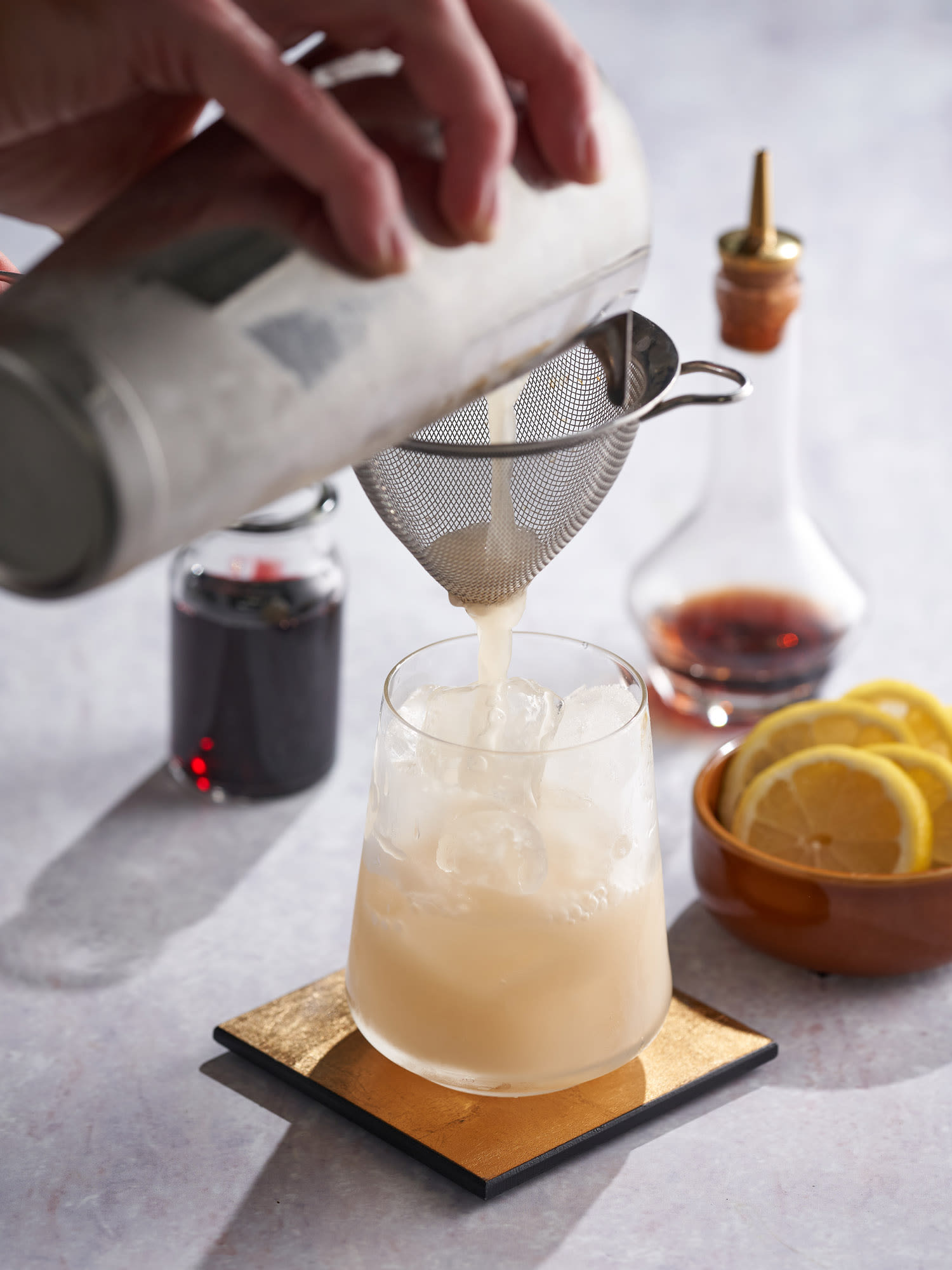

Top Tips when making Sours:
Now that you recognise the family tree, here are some ways to ensure you make a good Sour, irrespective of the variations of the component parts.
Egg whites (or vegan foaming bitters) need agitation and aeration through a hard vigorous shake in order to see that perfect silky foam settle on top of the liquid. Some bartenders “dry shake” in order to really bind the ingredients, where you give the ingredients a quick shake without ice first, which will fluff up the egg whites, before then adding large format cubes and shake again. The dry-shake method means that you can aerate the whites without fear of over-dilution – although it’s a bit of a faff until you get confident with your tools as it requires closing and opening the tin a few times. Our favourite compromise is to add in a circular pattern when we shake (rather than straight up and down), which has a whip-like effect and maximises the space inside the tin.
We’ve discussed glassware and pre-juicing citrus in our other back to school articles – and suffice it to say they make a big difference when it comes to Sours.
Last but not least - when you’re making your own sugar syrup, use a two to one ratio of sugar to water as the rich mouthfeel and heavy ratio that brings will add to the texture of the drink.
THE PUNCH:
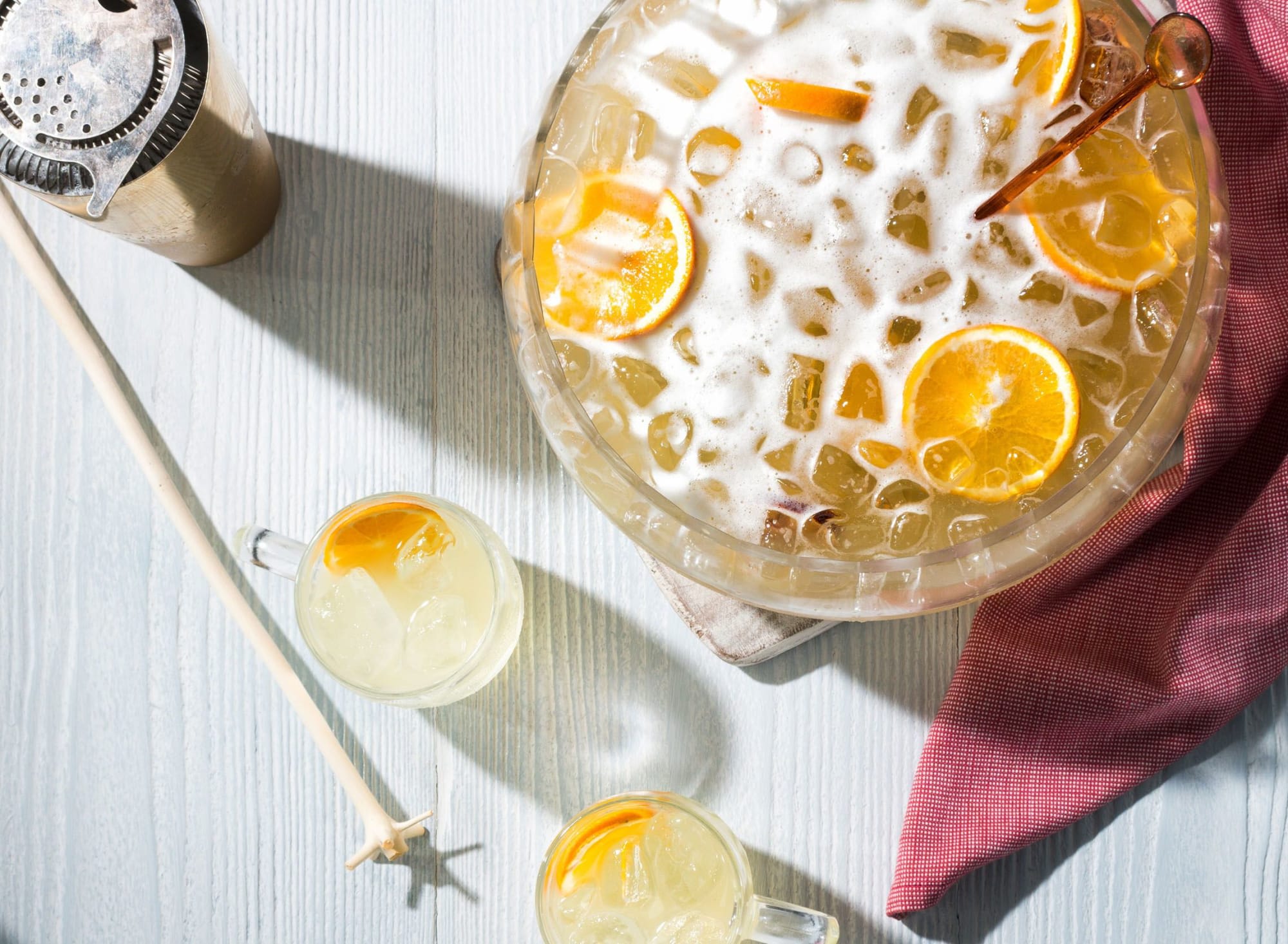

The Punch, or more specifically the Rum Punch, is a very special and historical genre of cocktail all in its own right and that’s because there is no standard recipe to go by.
Anywhere you order a Rum Punch, whether you’re savouring a funky variation at a swim-up bar in Jamaica or perched on a stool in a dimly lit Tiki joint in London, the cocktail served to you will always be different.
Yes, there have been countless recipes, riffs and recreations on the Punch, many follow the same basic formula and you can read them (broadly speaking) once you know it.
It’s thought that the word ‘punch’ comes from the Indian word ‘panch’, which means five and that's the first thing you tend to see - five ingredients. Second is the ratio, which can be tracked back to the famous Bajan poem for how to make a rum punch (and one we swear by).
‘One of sour, two of sweet, three of strong and four of weak,
A dash of bitters and a sprinkle of spice,
Serve well chilled with plenty of ice.’
Given the punch as a family has no absolute fixed rule, the cocktail family is more complicated than looking for a drink with five ingredients and that follows a set ratio. Sure. But so many do and as a quick “hack”, it's a great start point for you to memorise to know what you are working with irrespective of whether the recipe says punch in the title.
Top tips for making any punch:
Ice is key. If you are serving it in pitchers out of bowls – the more ice the better as you better control dilution. Don’t skimp.
Understand what will infuse over time and what will just go soggy. For example, mint is aromatic but has its biggest effect as a fresh garnish in a glass. Orange chunks, chilli and other ingredients don’t do much at first, but will add a second layer over time and become more prominent. Most punch recipes call for garnishes and fruits and it's key to understand that they are not just garnishes. They play a big role in what makes a good punch and you can ensure that what you make is perfect by separating the two into what’s added to the batch and helping it “evolve” vs what is added to the glass and used up on an individual basis.
OLD FASHIONED:
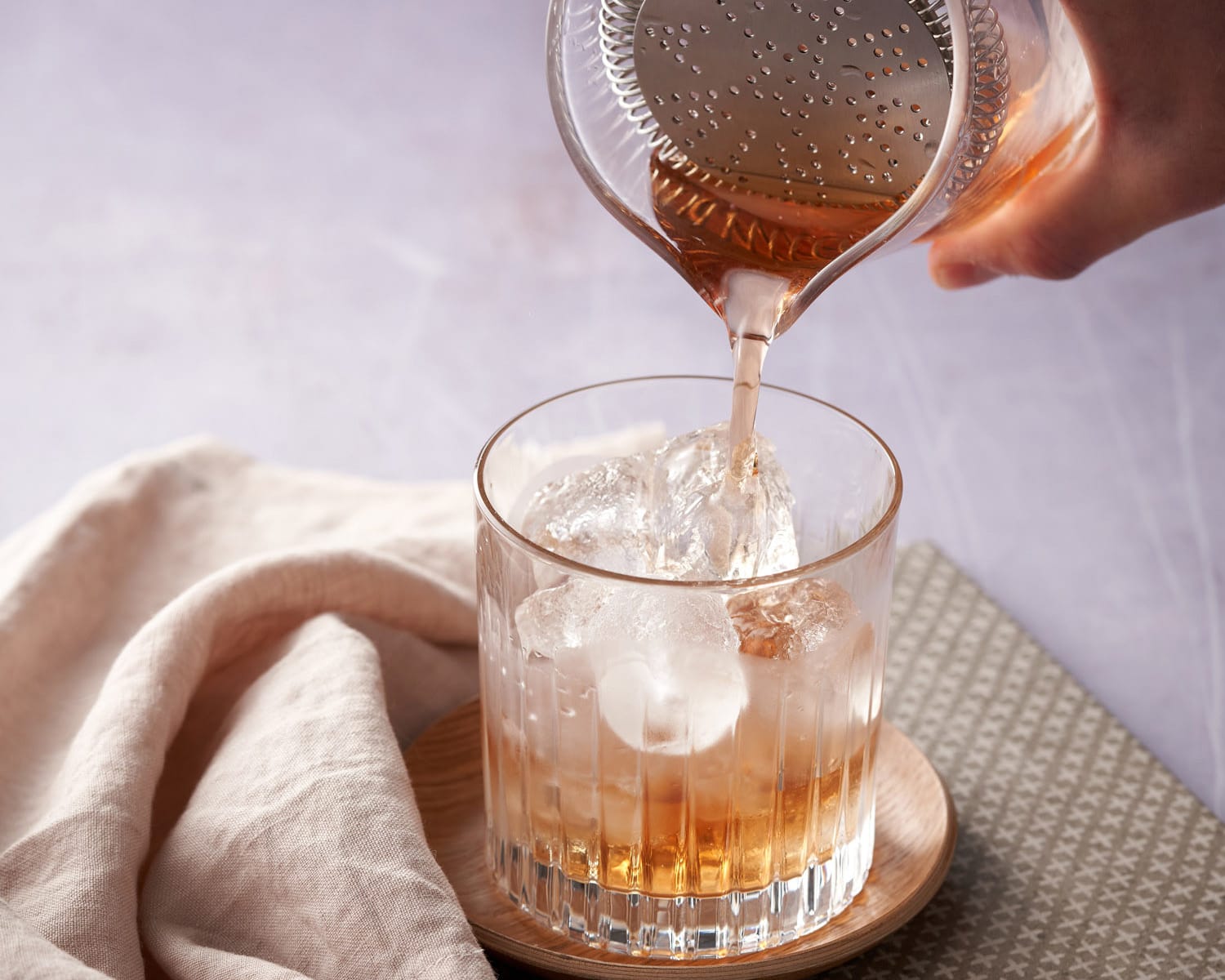

If you were to walk up to a bar and order an Old Fashioned, it’s a safe assumption that it will be made with some form of Whisky. More and more however, the Old Fashioned as a family is branching out into countless variations spanning across many spirits.
Lead Spirit + Sugar + Bitters
The base idea of an Old Fashioned is to draw your attention onto the ‘hero’ ingredient, the spirit. Twists have been around for a long time but they've just mostly been whisky based. It’s common to see Bourbon, Rye, Japanese, Scotch, Irish Whiskey Old Fashioned’s using different bitters or different sugar infusions - and in almost all cases that “hero” status and the emphasis on the spirit is a universal trait to all Old Fashioned's.
Search online and you’ll see other spirits are now being served in that way - Rum garnished with dehydrated banana chips, Vodka with a twist of lemon and or Mezcal and agave syrup, or a Gin Old Fashioned with unique garnishes. They lead with the spirit, soften it with sugar and accent it with a choice of bitters and garnish.
Top tips when making any Old Fashioned:
Focus on the dilution and temperature as you stir and in your glass. You can read all about how to control your rate of dilution for cocktails like Old Fashioned’s in our Tips & Tricks article.
Hone your home-made syrup. As with Sours, go for a two to one ratio of sugar to water and if you see variations – remember that the store-bought sugar syrups aren’t bad, but they are eclipsed but a good home-made version where you infuse real ingredients into the mix to flavour them.
As the genre (or family tree as we've phrased it here) is about the lead spirit, pay particular attention to its characteristics. The ABV, the flavours, the intensity as they will help guide you. For example, a higher ABV means you can stir away, while something that has a lower starting point means you need to be much more careful.
MULES:
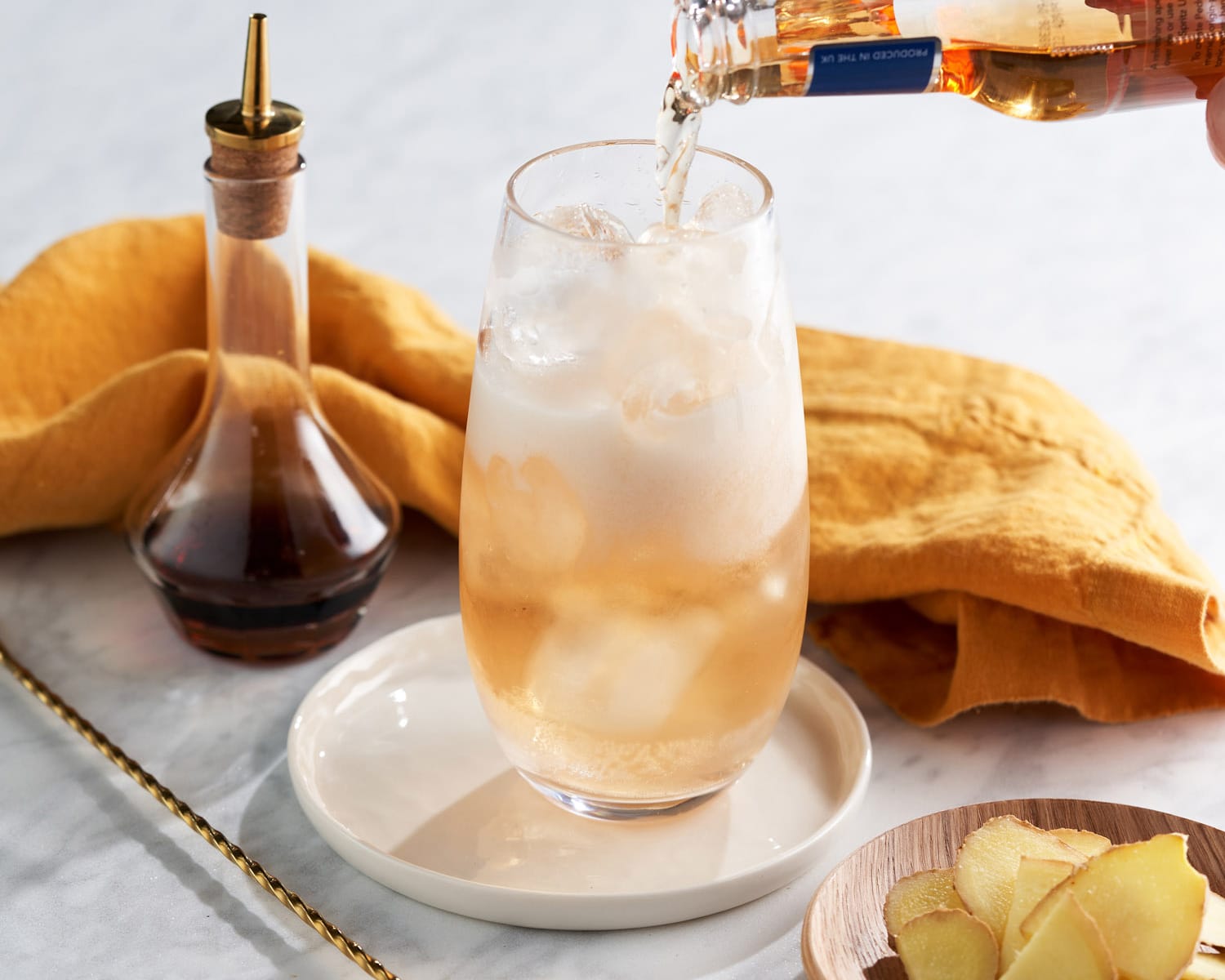

Mules are a family of cocktails that have a simple pattern to follow – they are cocktails made with ginger beer or ginger ale, citrus juice and any kind of spirit.
Spirit + Carbonated Mixer + Citrus Juice
A traditional Moscow Mule is made with Vodka, Ginger Beer and Lime Juice and it’s all about projecting simplicity and accessibility. Kentucky Mules, Mexican Mules, Mamie Taylor, Caribbean mule (as well as Dark & Stormy’s) and so many others all follow the same formula and have the same intent.
Top tips when making any Mule:
While there are riffs that change the component parts, as the drink is often built in a glass there’s not many techniques you can deploy to make massive differences to a Mule cocktail. So focus on the garnish. Consider how it’s presented, what the purpose of the garnish is, the way it’s placed and how it interacts with the drink.
If you want to boost the citrus in a Mule, you can muddle the wedges to begin with. Alternatively change your making method from by adding some citrus wedges, juice and spirit into a shaker before straining it into the glass and then topping up with ginger. Both will enhance the zing without the need of adjusting the amount of juice.
Don’t be shy to get creative with some riffs of your own too - throw in everything from jalapeños to hibiscus, watermelon to peach and strawberry to pineapple. The point of a mule is accessibility and simple, strong flavours, but that doesn't mean you can't build on it.
THE SMASH:
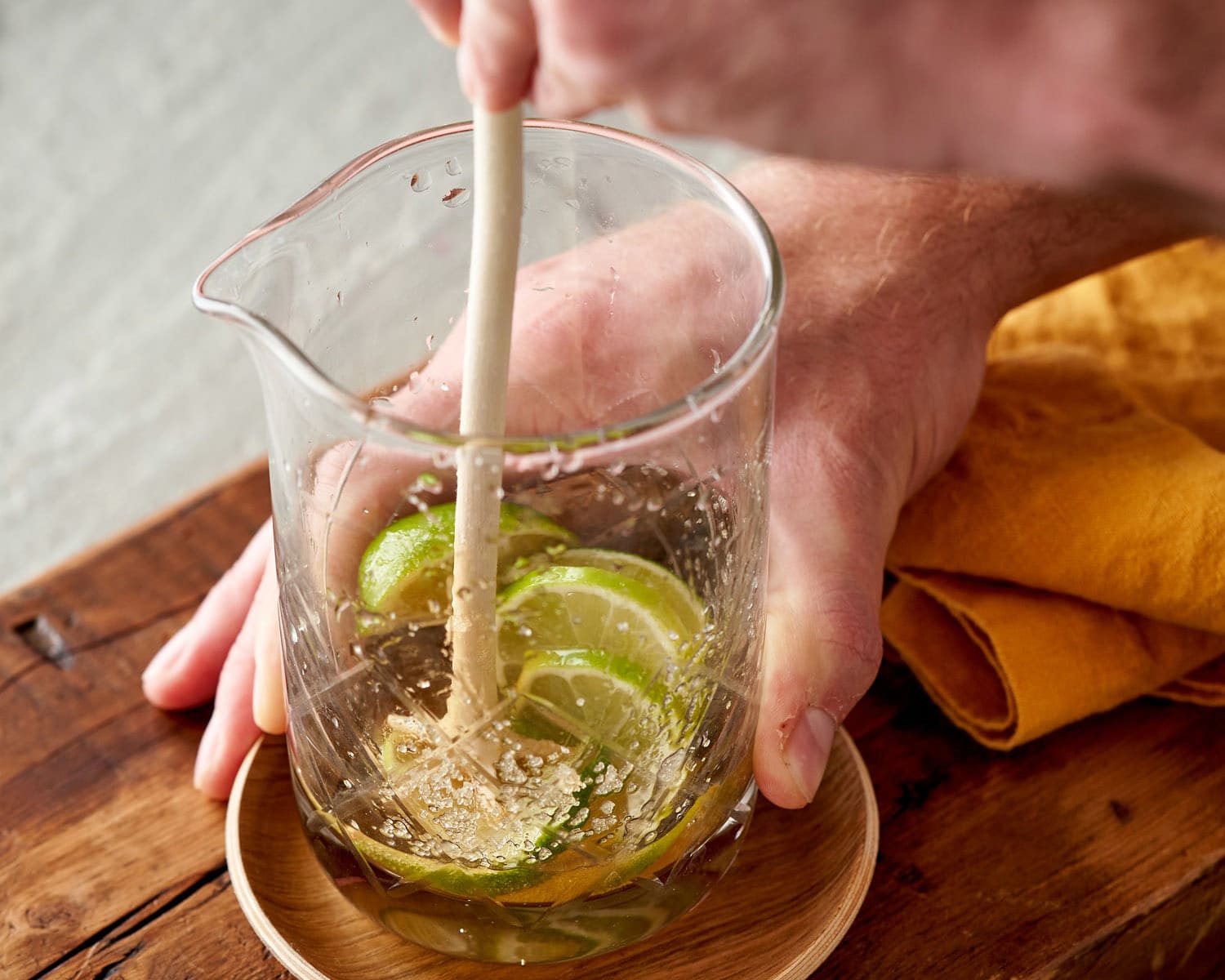

As a cocktail family the Smash is very similar to a sour. The two key differences to look for when identifying the genre is no egg whites and calls for muddling an ingredient. You could break a smash down to a simple formula of:
Spirit + Muddled Ingredient + Citrus Juice + Sugar
One of the more famous “smash” recipes is the Gin Basil Smash, made by muddling basil leaves, lemon juice and sugar together before vigorously shaking with Gin and double straining the serve over fresh cubed ice. There are now riffs that feature other herbs, fruits and spirits but they follow the same construction methodology.
Top tips when making any Smash:
A good Smash comes down to balance and the best way to achieve that is to really understand what’s being muddled. You might be expressing oils, but before muddling any fruit, taste some to get a feel for the tartness / sweetness and adapt from there.
Figure out if you want to muddle with sugar or separately. Some Smash recipes call for honey, maple syrup, agave or home-made infused syrups like rhubarb or lavender. Ask yourself which are best to add in at the time you are expressing oils (like caster sugar), and which are best added once you’ve finished that part (like honey).
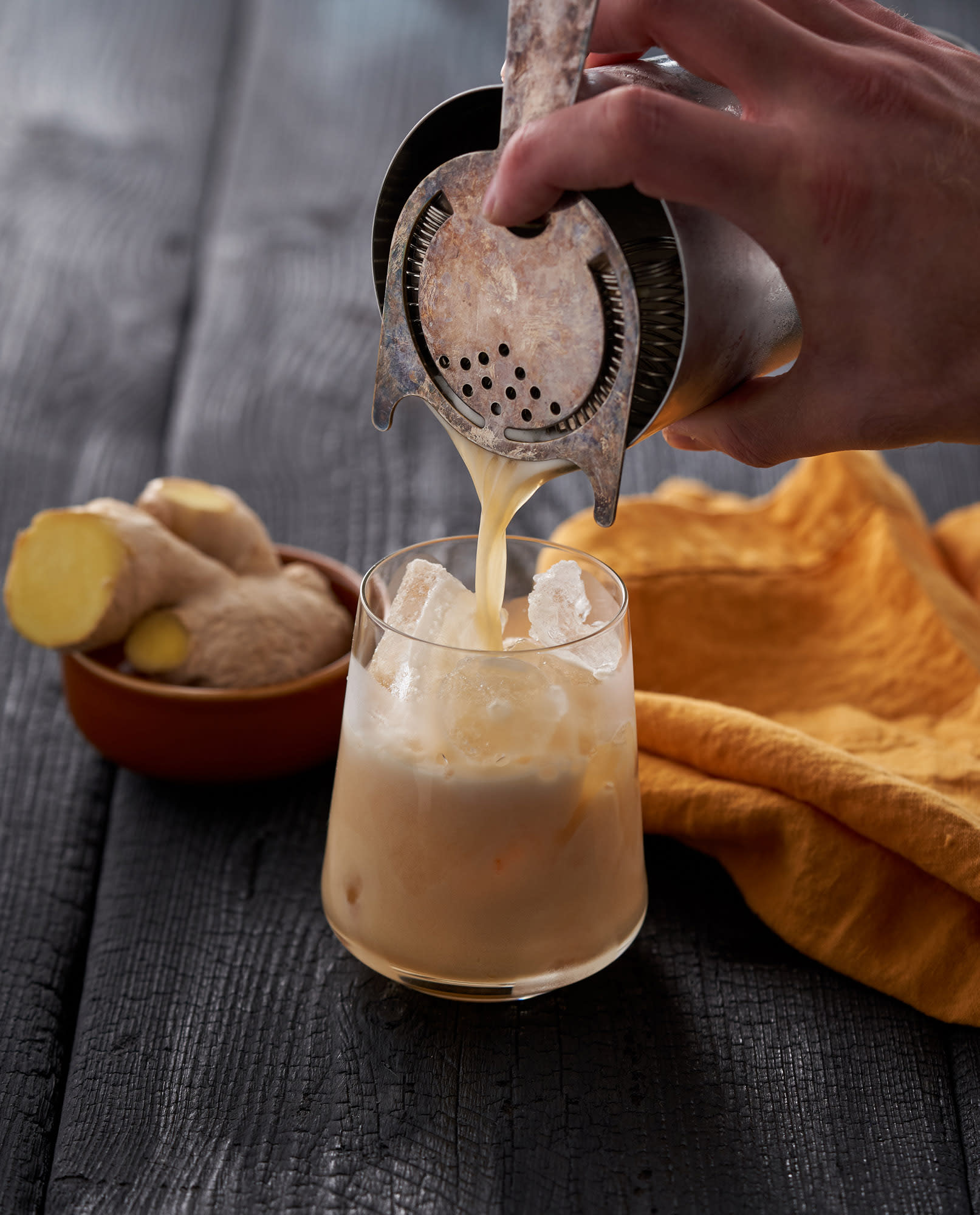

As soon as you start reading cocktails as part of a family tree, you’ll see that hundreds of recipes can be understood as merely a few dozen genres.
It becomes more manageable to wrap your head around and means you can apply a baseline understanding of the genre to the drink you are making and maximise your chances of creating something great.
Eventually, you’ll intuitively know how to read something and adapt it to your tastes. You may even become comfortable at experimenting with a few ideas of your own!
Happy mixing.

